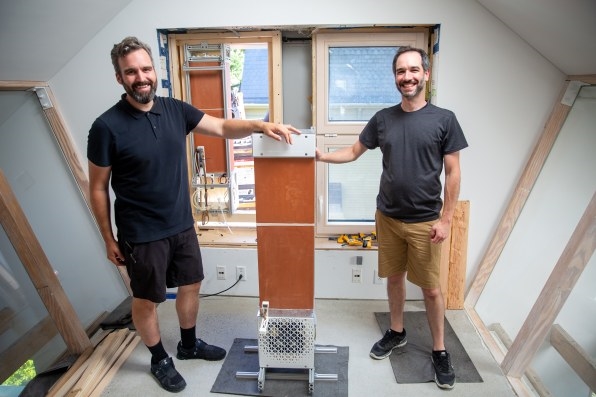Harvard researchers designed a cheaper, more efficient air conditioner
In China, a searing heat wave has lasted for more than two months, and the power grid is straining as people crank up their air-conditioning. The country is one of the places where AC use has been growing the fastest, with a five-fold jump between 2000 and 2017. But as the planet keeps getting hotter, and more people around the world are able to afford air-conditioning, its use is growing everywhere. By the middle of the century, there are likely to be about 5.6 billion of the appliances, and nearly triple the energy demand of cooling today.
“I think the numbers come out to about 10 new air conditioners every second for the next 30 years,” says Jack Alvarenga, a research scientist at Harvard University’s Wyss Institute, and part of a team working on redesigning how homes can be cooled. “That’s an unbelievable number. Just to fathom the amount of cooling demand that’s about to come online in the next couple of decades is concerning.”
The problem is significant both because of the amount of energy that air conditioners require and the fact that current refrigerants, the chemicals that absorb the heat in your AC, are also potent greenhouse gases. (Thanks to the global Kigali Agreement, the worst refrigerants are being phased out, but that will take time.) The more AC is used, the hotter it will get outside. Then people need to use even more air-conditioning, and the cycle continues.
At Harvard, a multidisciplinary team is working on a design for a new type of air-conditioning that uses a fraction of the energy, and uses water instead of ultra-polluting refrigerants. Called ColdSNAP (SNAP stands for “superhydrophobic nano-architecture process”), it incorporates a unique coating also developed at the university. “A lot of innovative materials are kind of products that want a problem,” says Jonathan Grinham, an architecture professor at the university’s Graduate School of Design and one of the partners on the project. “We call it a technology push. . . . Okay, I have something that has super-unique behavior. So how does it benefit society? Where do we apply this type of technology?”
In this case, the coating repels liquids, inspired by the way duck feathers stay dry. The team realized that if it selectively applied this coating to certain places on ceramic—a material that naturally absorbs moisture—they could use it in a new type of evaporative cooler. Sometimes called swamp coolers, the devices usually only work in dry climates. The basic concept is simple: If you put hot air in contact with water, the water absorbs heat as it evaporates. It uses 75% less energy than typical air conditioners. But the process of evaporative cooling also creates humidity, and so doesn’t work well in, say, Florida. In the new device, when water evaporates to cool the air, a heat-exchange component made with the coating traps the humidity, and the air flowing into the room is more comfortable.

This month, the researchers started testing it on humid, hot days in the Boston area, at Harvard’s experimental HouseZero, an old house that’s been retrofitted with technology to make it as efficient as possible. The team hasn’t crunched all of the data yet but says the technology shows promise for widespread use. “We’re cooling at a much higher efficiency than a typical AC unit, we’re able to achieve a cool temperature, and we’re able to do all that using less water than standards ask for,” says Grinham.
The technology still needs development beyond the initial prototype, and the team will have to show that it can meet certain performance requirements of the manufacturers that might eventually bring it to market. Consumers might have toalso think differently about how they expect air-conditioning to work since this type of device isn’t a dehumidifier. But because it uses so much less energy and is cheaper to make, it could be ideally suited for areas where electricity is expensive and customers can afford a standard air conditioner. “We need to find the right market, the right consumer,” he says.
Other researchers and startups are also developing better alternatives to standard air-conditioning. That includes efficient heat pumps—which exist now and can get incentives for consumers from the Inflation Reduction Act. Other new features include sensors that allow the device to let in outdoor air when it gets cooler, or connect directly to solar panels to avoid putting a strain on the electrical grid. At Harvard’s HouseZero, a geothermal well helps keep the house cool on days when it isn’t testing the new technology, and the windows are also designed to automatically open when the temperature drops at night. Other tweaks to building design can also help—from ultra-white paint that reflects sunlight to passive designs that strategically choose where to place windows and add shade.
Fast Company , Read Full Story
(28)


